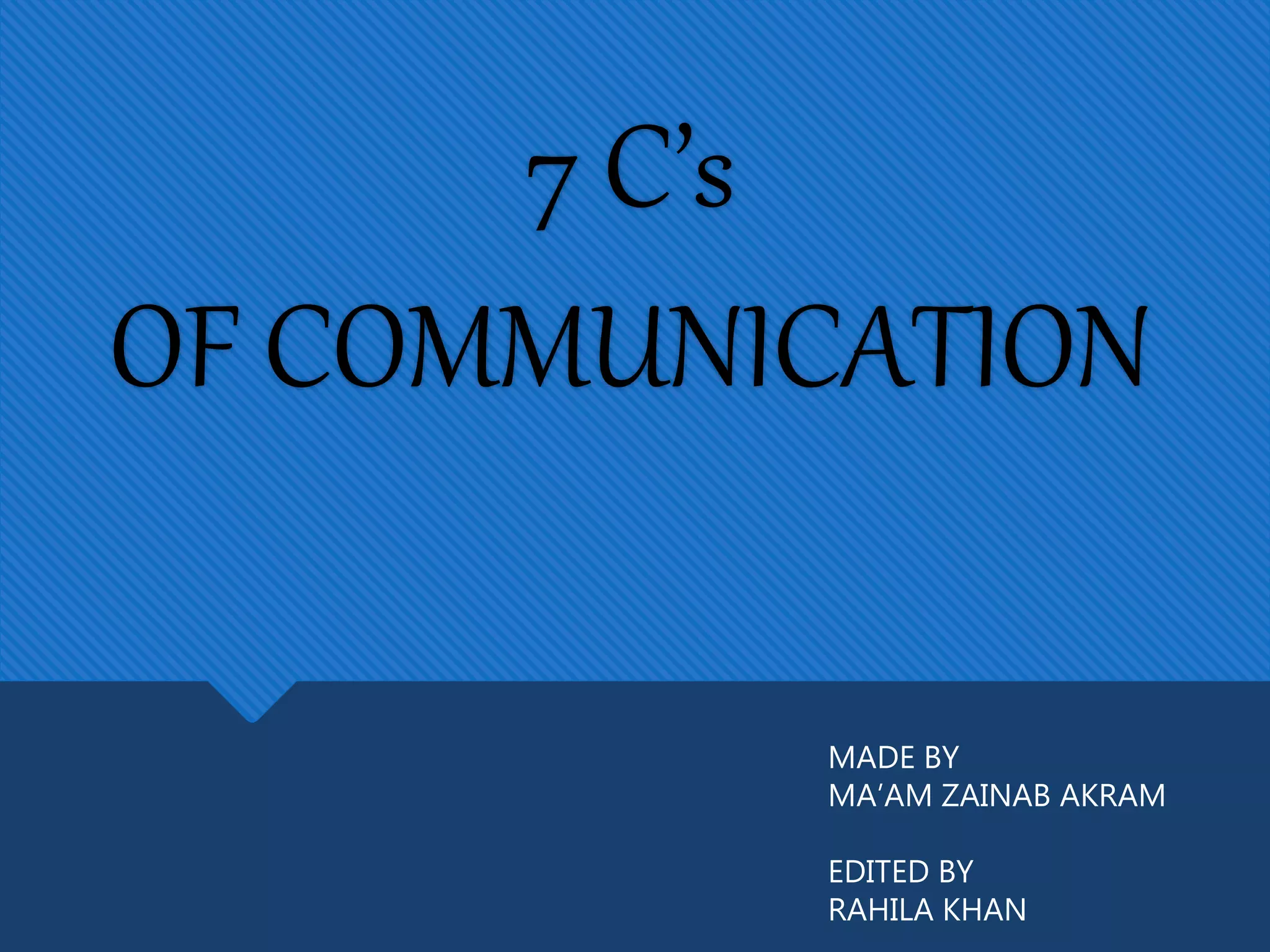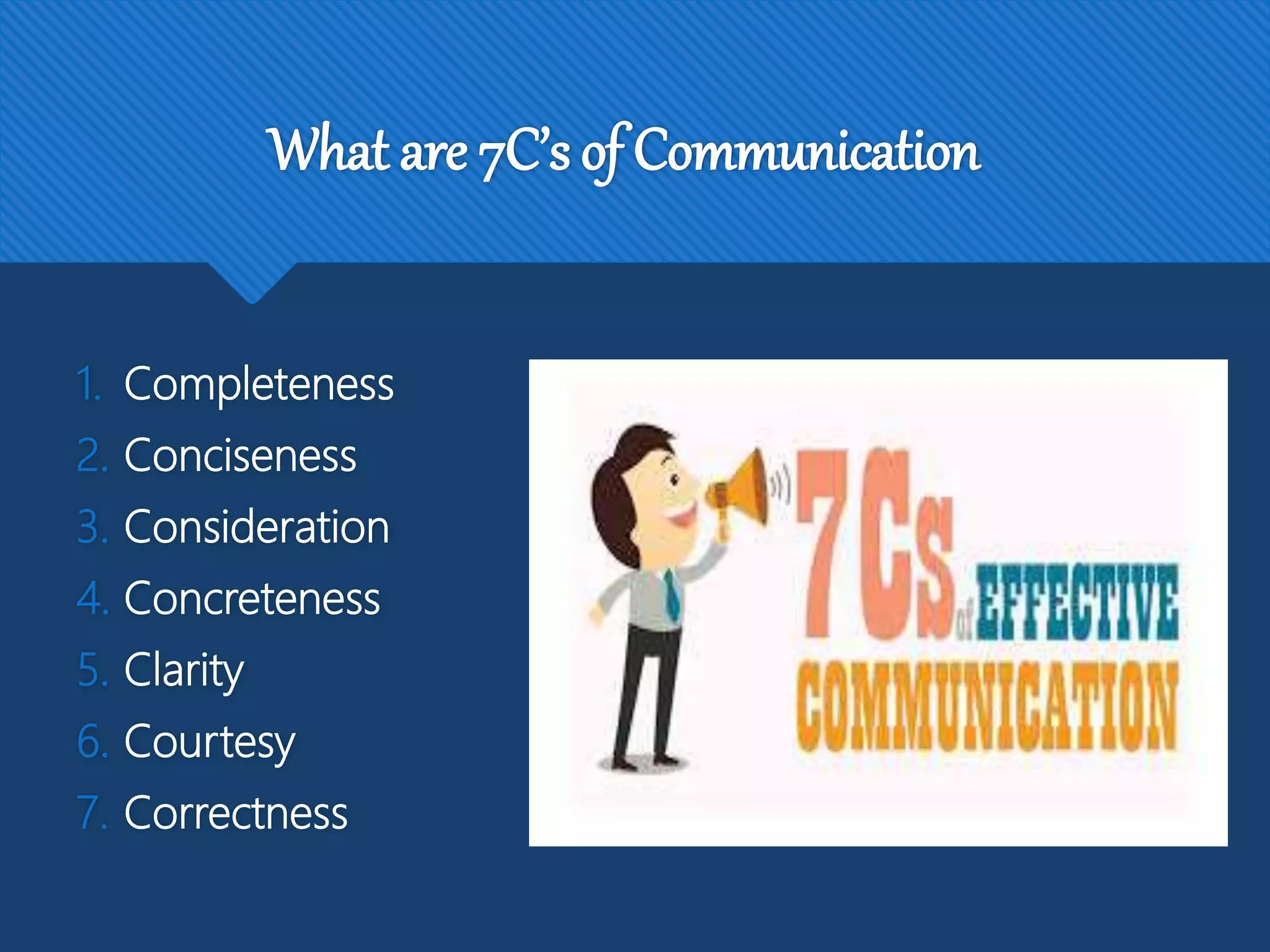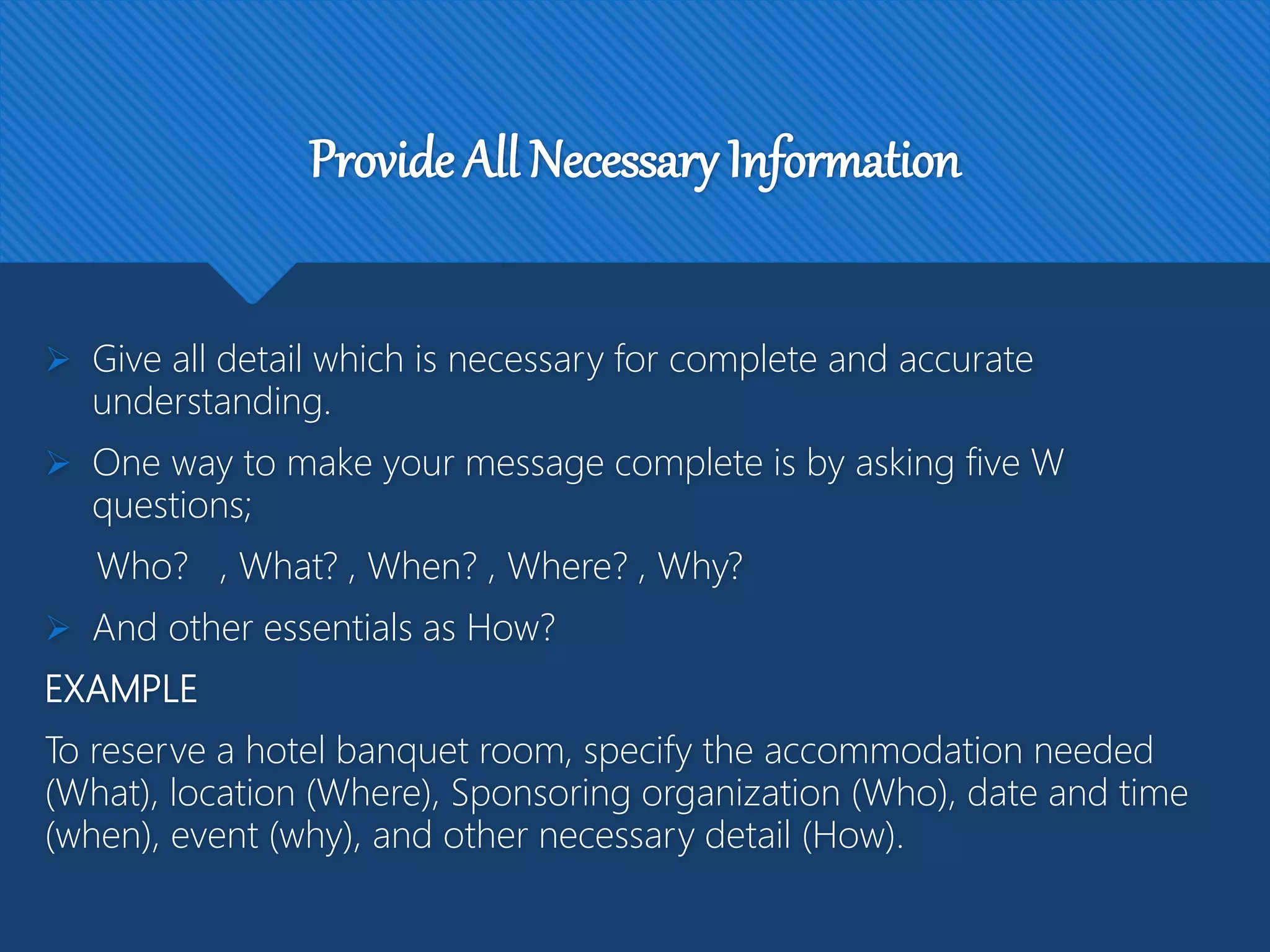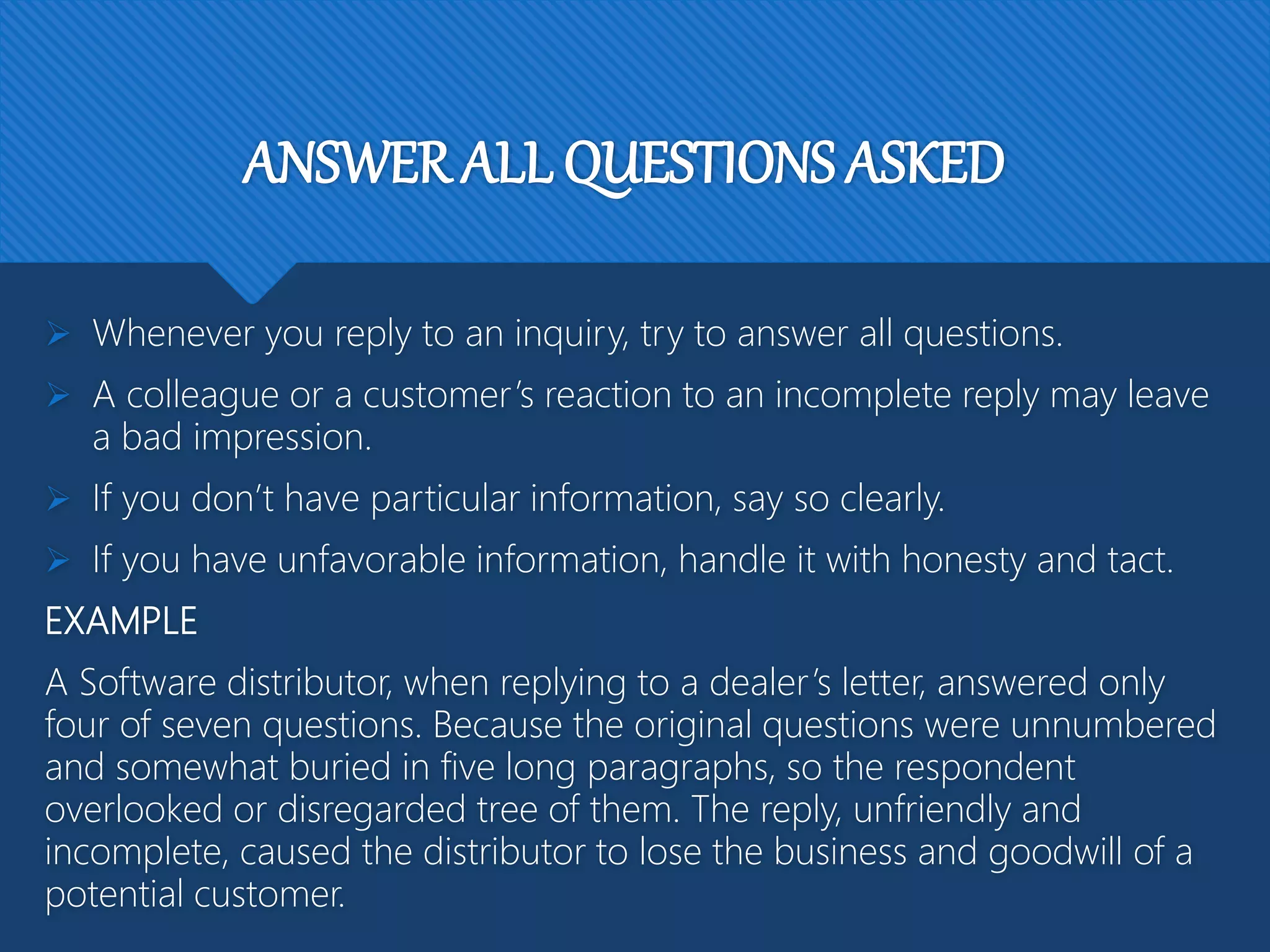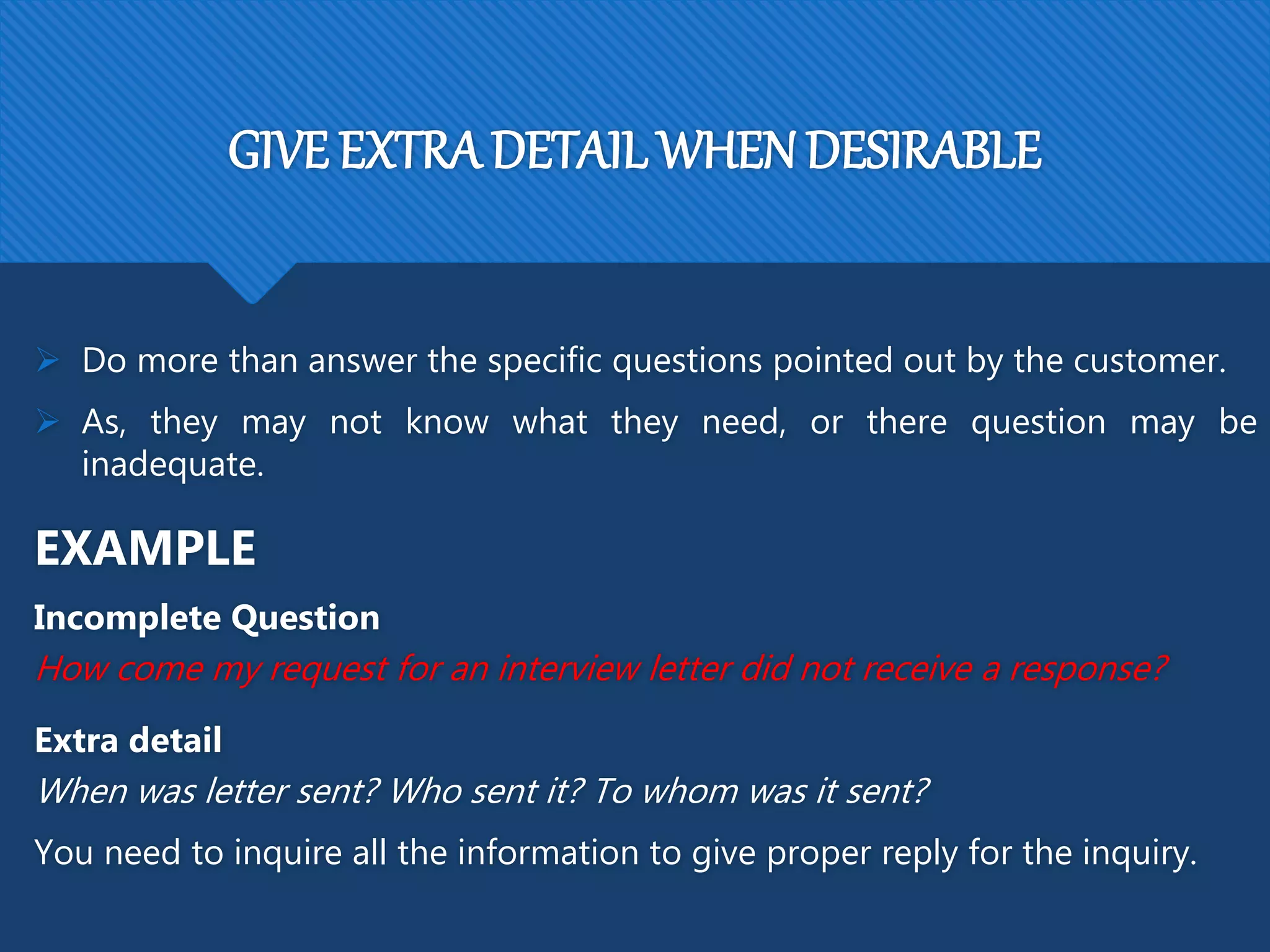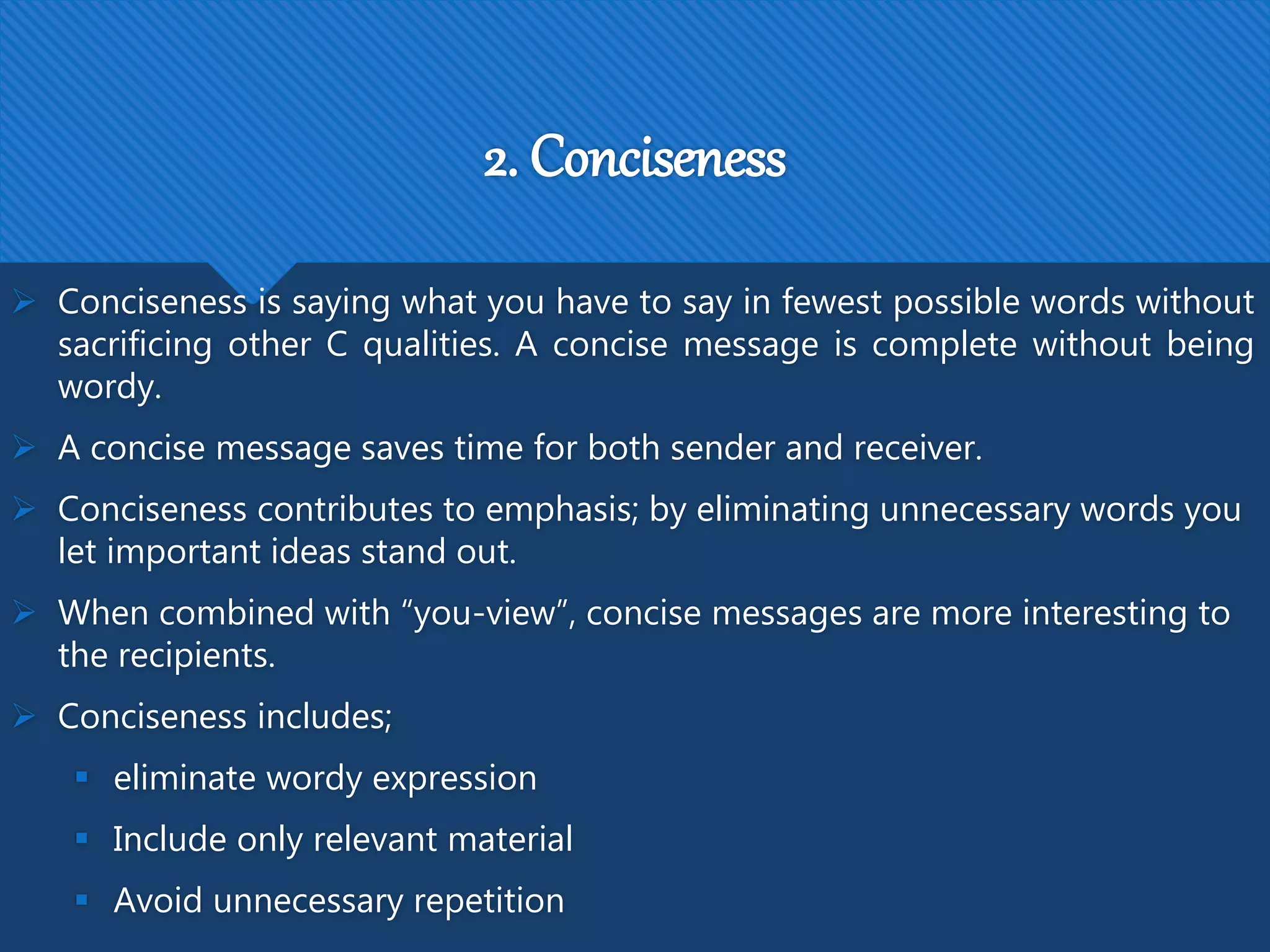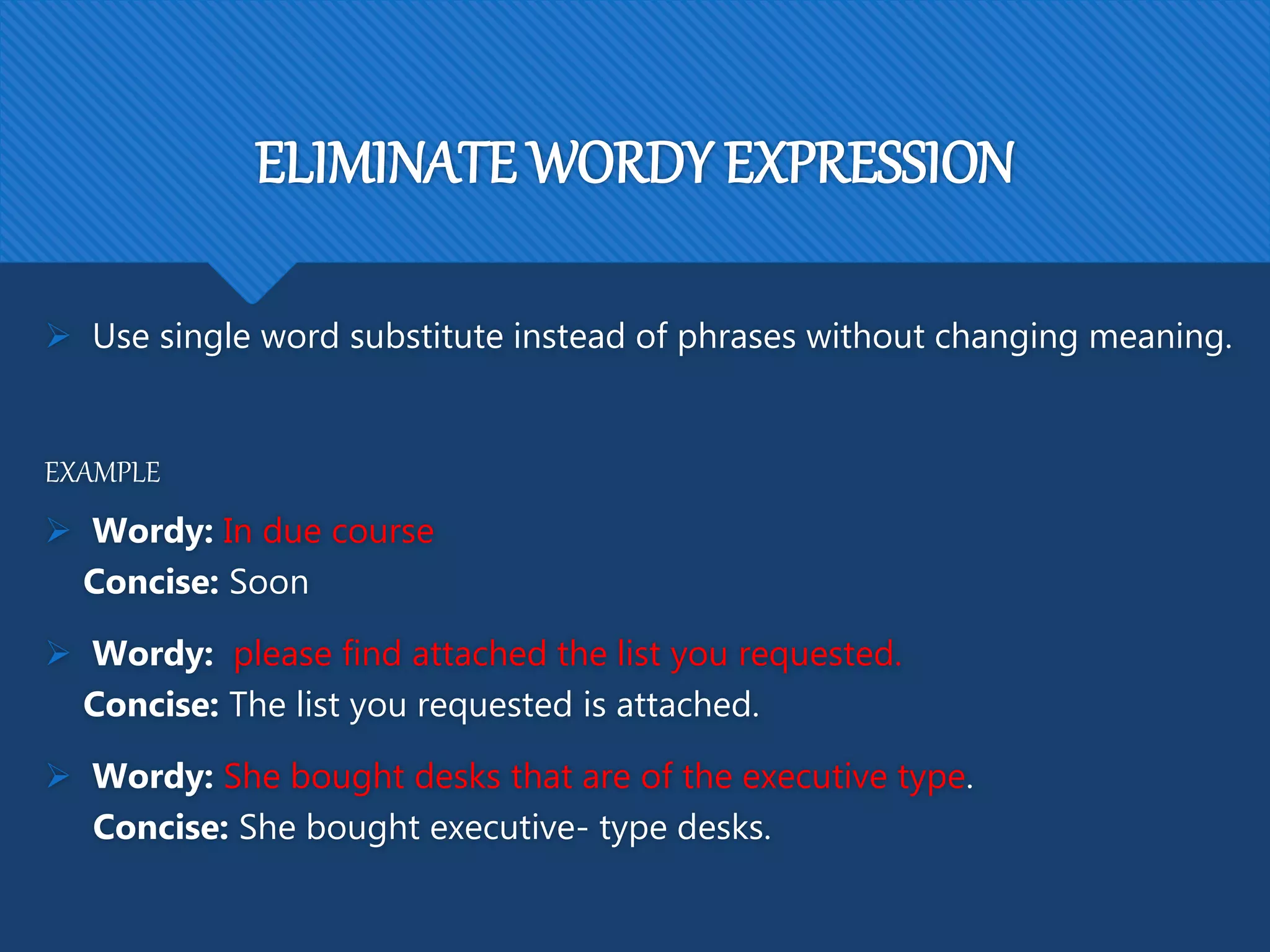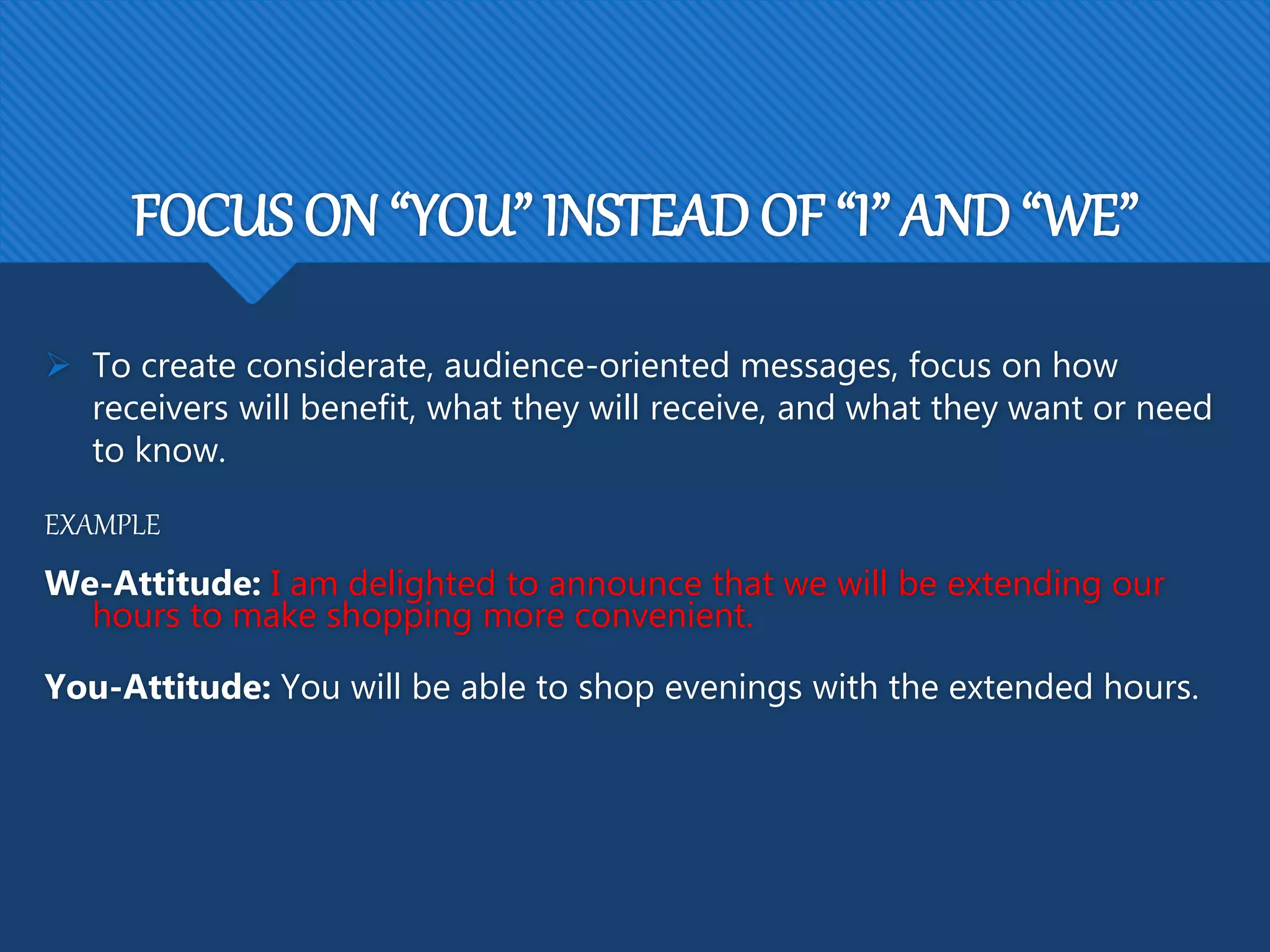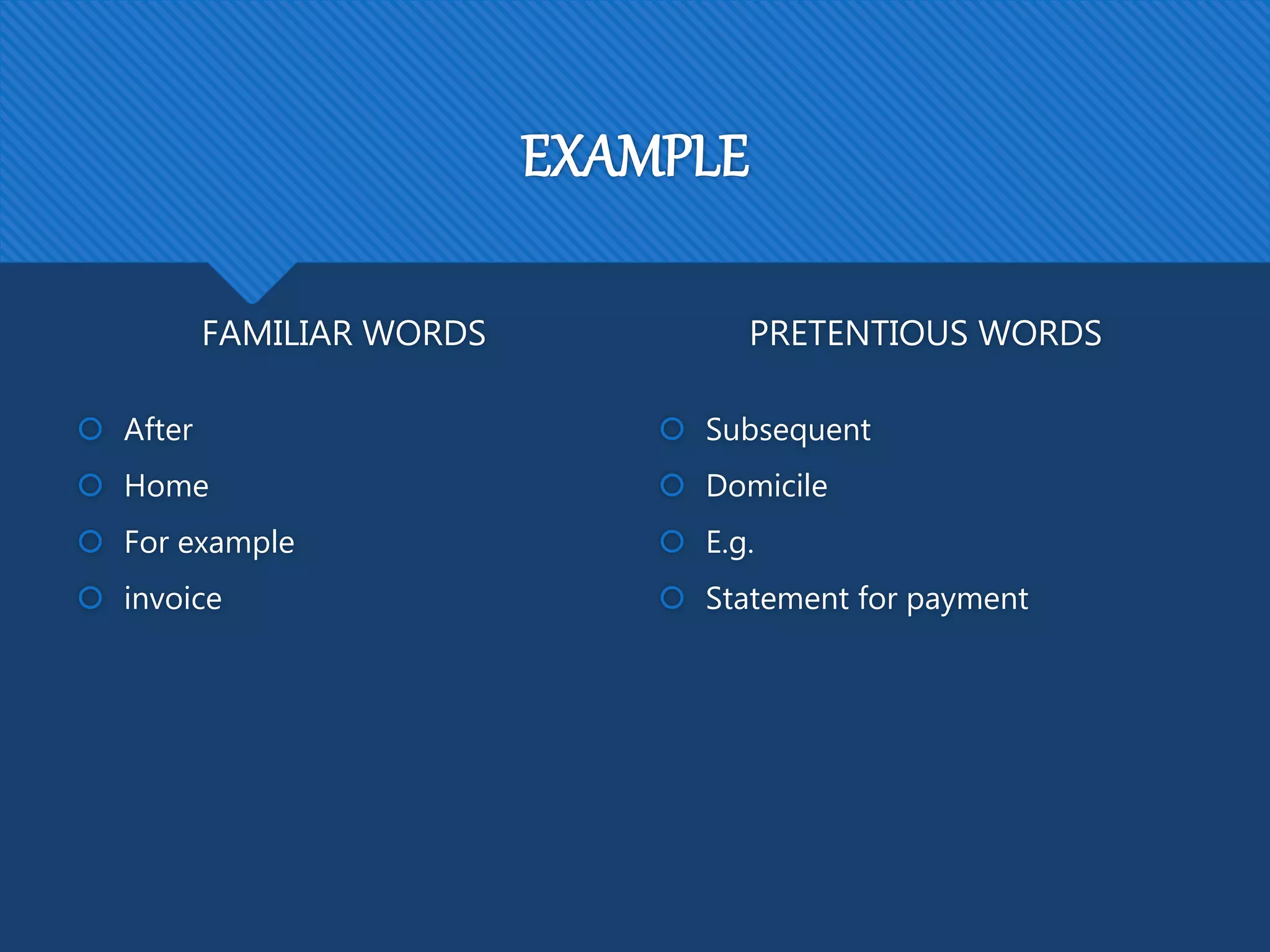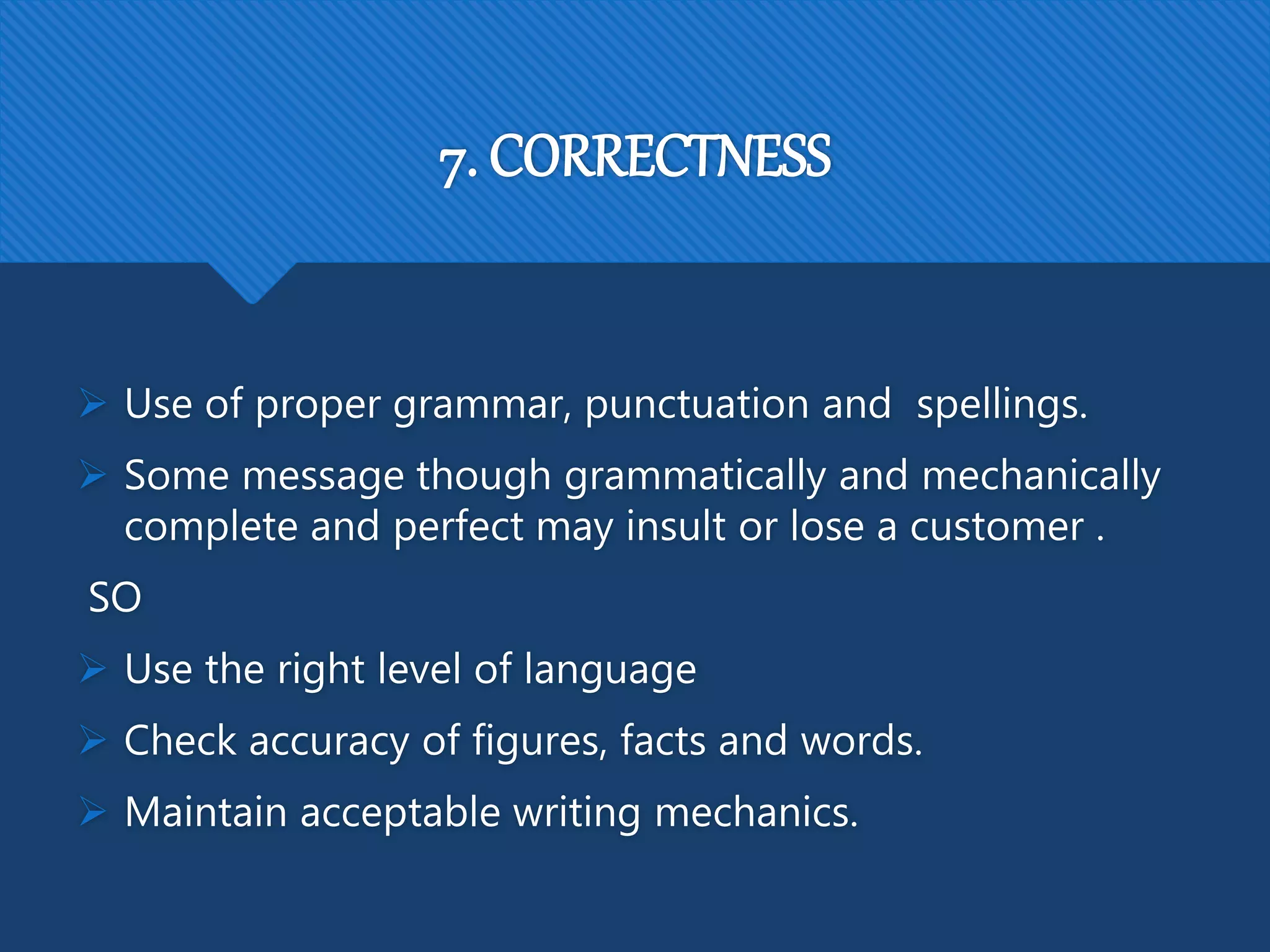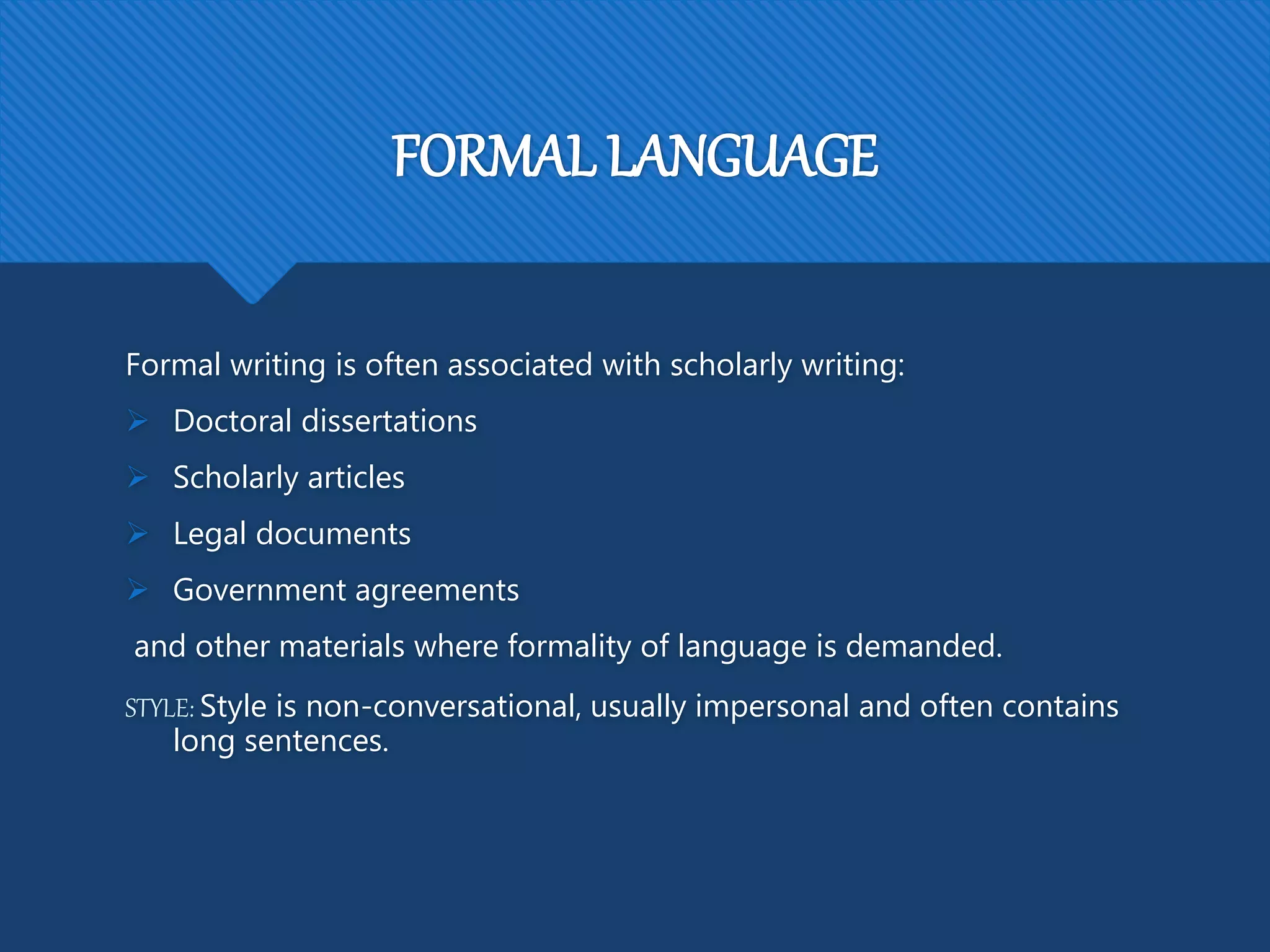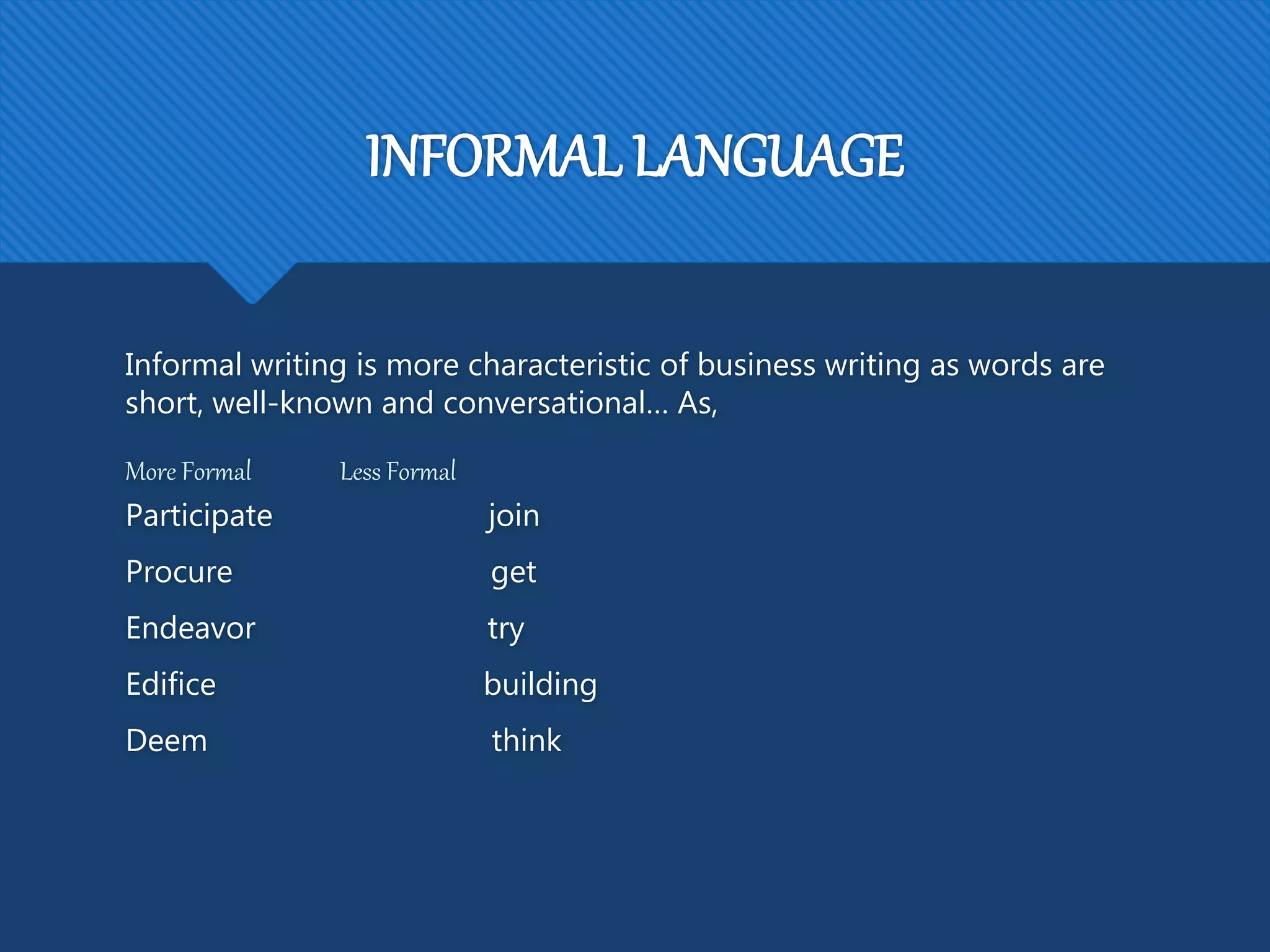The document outlines the 7 C's of communication: completeness, conciseness, consideration, concreteness, clarity, courtesy, and correctness. Each C is defined in 1-2 sentences. Completeness means including all necessary information to avoid misunderstandings. Conciseness is expressing ideas using the fewest words possible. Consideration involves focusing on the recipient's perspective. Concreteness requires using specific details and examples. Clarity relies on precise language and familiar terms. Courtesy shows respect and care for the recipient. Correctness means free from errors in spelling, grammar and facts.
